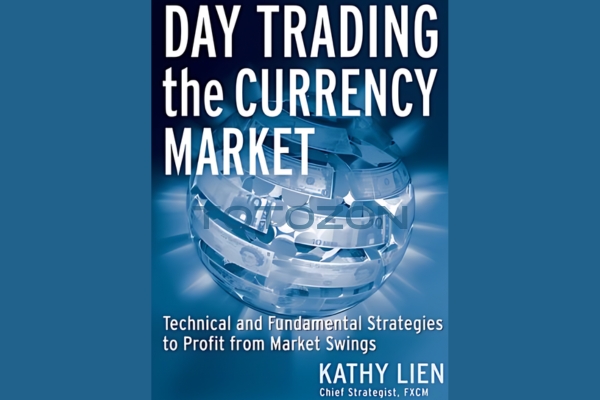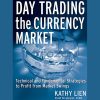-
×
 Advanced Calculus with Applications in Statistics
1 × $6.00
Advanced Calculus with Applications in Statistics
1 × $6.00 -
×
 White Phoenix’s The Smart (Money) Approach to Trading with Jayson Casper
1 × $39.00
White Phoenix’s The Smart (Money) Approach to Trading with Jayson Casper
1 × $39.00 -
×
 AI For Traders with Trading Markets
1 × $31.00
AI For Traders with Trading Markets
1 × $31.00 -
×
 Best of AM Review (Volume 1-3) with Peter Bain
1 × $6.00
Best of AM Review (Volume 1-3) with Peter Bain
1 × $6.00 -
×
 Crypto Trading Academy with Cheeky Investor - Aussie Day Trader
1 × $13.00
Crypto Trading Academy with Cheeky Investor - Aussie Day Trader
1 × $13.00 -
×
 Essentials in Quantitative Trading QT01 By HangukQuant's
1 × $23.00
Essentials in Quantitative Trading QT01 By HangukQuant's
1 × $23.00 -
×
 Zen in the Markets with Edward Allen Toppel
1 × $6.00
Zen in the Markets with Edward Allen Toppel
1 × $6.00 -
×
 Forex Strategy Course with Angel Traders
1 × $6.00
Forex Strategy Course with Angel Traders
1 × $6.00 -
×
 Trading Short TermSame Day Trades Sep 2023 with Dan Sheridan & Mark Fenton - Sheridan Options Mentoring
1 × $31.00
Trading Short TermSame Day Trades Sep 2023 with Dan Sheridan & Mark Fenton - Sheridan Options Mentoring
1 × $31.00
Day Trading the Currency Market: Technical and Fundamental Strategies To Profit from Market Swings with Kathy Lien
$45.00 Original price was: $45.00.$6.00Current price is: $6.00.
File Size: Coming soon!
Delivery Time: 1–12 hours
Media Type: Online Course
Day Trading the Currency Market: Technical and Fundamental Strategies to Profit from Market Swings with Kathy Lien
Introduction to Day Trading the Currency Market
Day trading the currency market can be a thrilling and lucrative endeavor. With the right strategies and knowledge, you can navigate the complexities of forex trading and turn market swings to your advantage. In this article, we delve into the insights and strategies presented by Kathy Lien, a renowned expert in forex trading.
Understanding the Basics of Forex Trading
What is Forex Trading?
Forex trading, also known as foreign exchange trading, involves buying and selling currencies to profit from fluctuations in exchange rates. It’s the largest financial market globally, offering high liquidity and round-the-clock trading opportunities.
Why Choose Day Trading?
Day trading involves executing multiple trades within a single trading day. This approach minimizes overnight risk and allows traders to capitalize on short-term market movements. But why should you consider day trading in the currency market?
- High Liquidity: The forex market is incredibly liquid, ensuring quick execution of trades.
- Flexibility: With 24-hour market availability, you can trade at any time that suits you.
- Leverage: Forex brokers offer significant leverage, amplifying potential profits.
Technical Strategies for Day Trading
Importance of Technical Analysis
Technical analysis involves studying historical price movements to predict future market behavior. It’s an essential tool for day traders aiming to make informed decisions quickly.
Key Technical Indicators
Moving Averages
Moving averages smooth out price data to identify trends. Common types include simple moving averages (SMA) and exponential moving averages (EMA).
Relative Strength Index (RSI)
RSI measures the speed and change of price movements. It’s useful for identifying overbought or oversold conditions in the market.
Bollinger Bands
Bollinger Bands consist of a middle band (SMA) and two outer bands. They help traders recognize volatility and potential price reversals.
Chart Patterns
Identifying chart patterns like head and shoulders, triangles, and flags can provide insights into potential market movements.
Fundamental Strategies for Day Trading
Importance of Fundamental Analysis
Fundamental analysis examines economic indicators, political events, and market news to determine the intrinsic value of a currency. This analysis is crucial for understanding long-term market trends.
Key Economic Indicators
Interest Rates
Interest rates set by central banks influence currency values. Higher rates typically attract foreign capital, boosting the currency’s value.
Inflation Rates
Inflation affects purchasing power and can lead to changes in interest rates. Keeping an eye on inflation data helps anticipate market reactions.
Employment Data
Employment statistics, such as the Non-Farm Payroll report in the US, can significantly impact currency prices.
News Trading
Reacting to breaking news and economic reports can be profitable for day traders. However, it’s essential to be quick and efficient in processing and acting on the information.
Combining Technical and Fundamental Strategies
Creating a Trading Plan
A robust trading plan combines technical and fundamental analysis to make informed trading decisions. Here’s how to create one:
- Set Clear Goals: Define your financial targets and risk tolerance.
- Choose the Right Tools: Utilize technical indicators and economic calendars.
- Develop Entry and Exit Strategies: Determine the conditions under which you will enter and exit trades.
Risk Management
Effective risk management is crucial for long-term success in day trading. Techniques include setting stop-loss orders, diversifying trades, and not risking more than a small percentage of your capital on a single trade.
Kathy Lien’s Expert Tips
Leveraging Experience
Kathy Lien emphasizes the importance of continuous learning and adapting to market changes. Stay updated with the latest market news and refine your strategies accordingly.
Psychological Discipline
Maintaining emotional discipline is vital. Avoid letting emotions drive your trading decisions. Stick to your plan and remain patient.
Conclusion
Day trading the currency market requires a blend of technical and fundamental strategies. By leveraging Kathy Lien’s expert insights and maintaining a disciplined approach, you can navigate the forex market’s complexities and profit from market swings. Remember, continuous learning and adapting your strategies are key to long-term success.
FAQs
What is the best time to day trade the forex market?
The best time to trade is during the overlap of major market sessions, such as the London-New York overlap.
How much capital do I need to start day trading?
While there’s no fixed amount, starting with at least $500 to $1,000 can provide enough leverage to make meaningful trades.
Can I day trade forex with a full-time job?
Yes, the forex market’s 24-hour availability allows for trading outside regular working hours.
What are the common mistakes to avoid in forex day trading?
Common mistakes include overtrading, lack of a trading plan, and poor risk management.
How do I stay updated with market news?
Utilize financial news websites, economic calendars, and subscribe to market analysis newsletters.
Be the first to review “Day Trading the Currency Market: Technical and Fundamental Strategies To Profit from Market Swings with Kathy Lien” Cancel reply
You must be logged in to post a review.
Related products
Forex Trading
Forex Trading
Forex Trading
Forex Trading
Forex Trading
Forex Trading
Forex Trading
Forex Trading
Forex Trading
Forex Trading






















Reviews
There are no reviews yet.